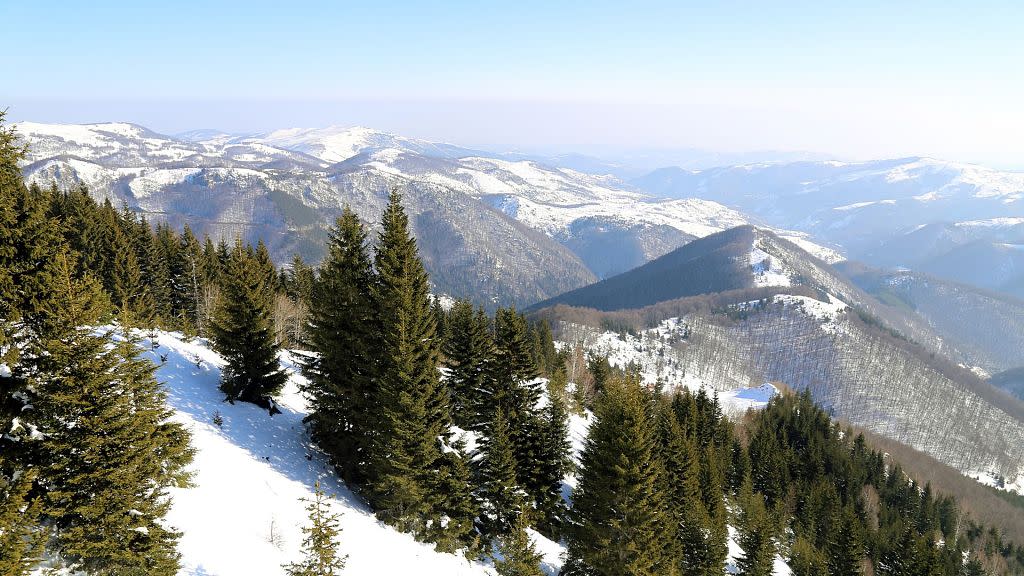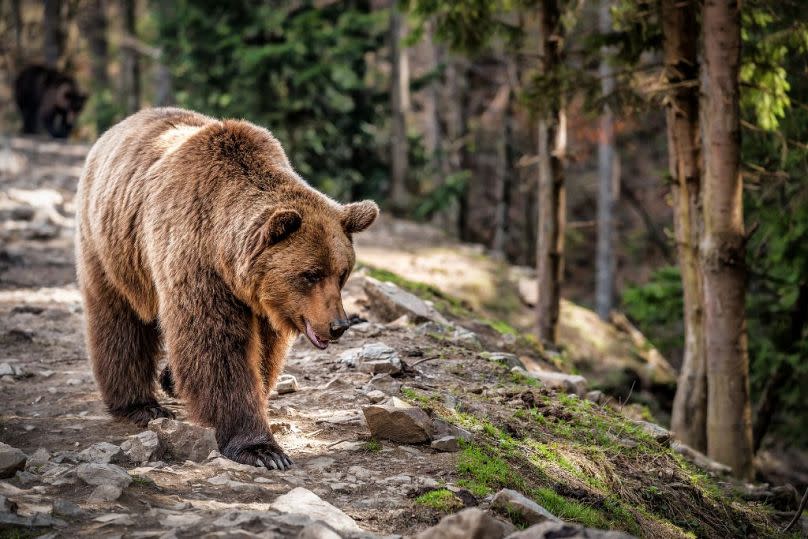Serbia’s national parks are a nature lover’s dream: Where to go for vineyards, hiking and history

Landlocked in the heart of the Balkans, Serbia is the crossroads of different cultures and historical influences, making it a unique and diverse travel destination.
Here, you'll find a blend of history, culture, and natural beauty alongside its dynamic capital city, Belgrade, which has plenty of UNESCO sites and national parks to discover.
Serbia has typically been off the tourist radar, but with ongoing investment into tourism infrastructure and new hotel and resort openings, the country is poised to attract more visitors to its capital and wild landscapes.
The gritty, nightlife-packed capital of Belgrade is an obvious starting point for international visitors. However, the National Tourism Organisation hopes to entice travellers away from the capital and direct them to the country’s many ski slopes, national parks, and UNESCO sites.
What is there to do in Serbia?

Marija Labovic, CEO of the National Tourism Organisation of Serbia, says that despite a wealth of natural and historic offerings, international travellers rarely venture beyond Serbia's capital, Belgrade.
"We are a destination with a variety of tourism products," Labovic adds. "Top of our list would be nature-based vacations."
Serbia's natural landscapes are undeniably impressive, with deep gorges, jagged mountains, pristine rivers, and lush forests.
Tara National Park, in western Serbia, is a must-visit for outdoor adventures, offering hiking trails, waterfalls, and dreamy views of the Drina River Canyon.
Kopaonik National Park, in the central part of the country, is a popular destination for skiing and snowboarding in the winter months and hiking and mountain biking during the summer.
Near Belgrade, the Fruška Gora National Park provides a serene escape from city life and is known for its leafy vineyards and centuries-old monasteries.
Here's our guide to Serbia's five national parks, where you can traverse unspoiled natural landscapes and hike, swim, and ski as the seasons change.
Tara National Park

Spanning 220 sq km kingdom of untouched nature, Tara National Park is a haven for biodiversity and outdoor adventure in western Serbia.
Home to mountain slopes, dense forests, deep gorges, and the winding Drina River, Tara is popular with hikers, wildlife lovers and photographers.
Along with scenic lookout points and authentic 'Ethno villages', Tara has over 20 marked hiking and mountaineering trails that take you through various landscapes.
Start your exploration at Banjska Stena, a dramatic viewpoint offering panoramic vistas of the Drina River Canyon below.
From here, hike the Banjska Stena Trail, which winds through ancient beech and fir forests, past cascading waterfalls, and alongside crystal-clear streams.
You can also enjoy cycling in the Tara National Park. The "Tarocikl" (Tarocycle) project offers hundreds of bicycle paths, from flower-filled meadows to mountains and canyons.
For an adrenaline rush, book a rafting experience on the tumbling waters of the Drina River Canyon, the second-deepest canyon in Europe.
Fruška Gora National Park: For wildlife, vineyards, and monasteries
Near Serbia's nightlife-packed capital, Belgrade, the Fruška Gora National Park provides an escape from the dense urban centre.
Once an island in the Pannonian Sea, Serbia's first national park is known for wildlife, lush vineyards, and monasteries.
Explore the park's network of hiking trails, which lead to hidden monasteries, scenic viewpoints, and ancient ruins dating back to Roman times.
Don't miss the opportunity to sample local wines at one of Fruška Gora's many wineries, where you can learn more about the region's rich viticultural heritage.
To explore the park's religious history, visit the Krusedol Monastery, a 16th-century Serbian Orthodox monastery. Admire its frescoes, stroll through its peaceful gardens, and soak in the spiritual atmosphere that permeates this remarkable site.
Đerdap National Park: For river rafting, history and boat tours
Stretching along the Danube River, Đerdap National Park is a beautiful landscape of gorges, ravines and ancient fortresses.
At 636 sq km, it's the biggest national park in Serbia. Its namesake, the Đerdap Gorge, is one of the largest gorges in Europe and has plenty of outdoor activities for visitors.
Begin by exploring the Golubac Fortress, a medieval stronghold perched atop a rocky outcrop overlooking the Danube. Wander through its labyrinthine corridors, climb its towering battlements, and imagine the battles that once raged within its walls.
For a closer look at Đerdap's natural wonders, book a boat tour of the Iron Gate, a series of imposing gorges and rock formations carved by the Danube over millennia.
Look up at the sheer cliffs that rise hundreds of metres above the river, and watch for rare bird species and wildlife in this pristine wilderness.
Kopaonik National Park: For skiing, hiking and wildlife

Located in the heart of Serbia, Kopaonik National Park is the country's biggest mountain range and one of the best places to ski.
With its snow-capped peaks, dense forests, and alpine meadows, Kopaonik offers many year-round outdoor activities, from skiing and snowboarding to hiking and mountain biking.
Hit the slopes at Kopaonik Ski Resort, where impressive ski runs cater to all skill levels. Whether you're a seasoned pro or hitting the snow for the first time, Kopaonik's thrilling pistes are a must-visit.
The park transforms into a hiker's paradise during the summer, with a network of trails leading to panoramic viewpoints, cascading waterfalls, and serene mountain lakes.
Look for rare plant and animal species, including lynx, wolves, and golden eagles, inhabiting the park's diverse ecosystems.
The Šar Mountain National Park: For cultural heritage, wildlife and mountains
The Šar Mountain National Park encompasses a vast expanse of wilderness and forms a natural border between Macedonia and Serbia.
Packed with raw beauty, the park is home to a wide variety of flora and fauna, with over 1,500 plant species and elusive wildlife inhabiting its diverse habitats. Look out for brown bears, eagles and over 147 butterfly species.
In addition to its mountainous landscapes, Šar Mountain features plenty of history and culture. The region has been inhabited for thousands of years, with evidence of human settlement dating back to ancient times.
Throughout the park, you can spot medieval Orthodox churches, monasteries, fortifications, and traditional villages that offer insights into the area's rich cultural heritage. It's easy to see why this historically significant area has been nominated for the UNESCO World Heritage Site programme.


